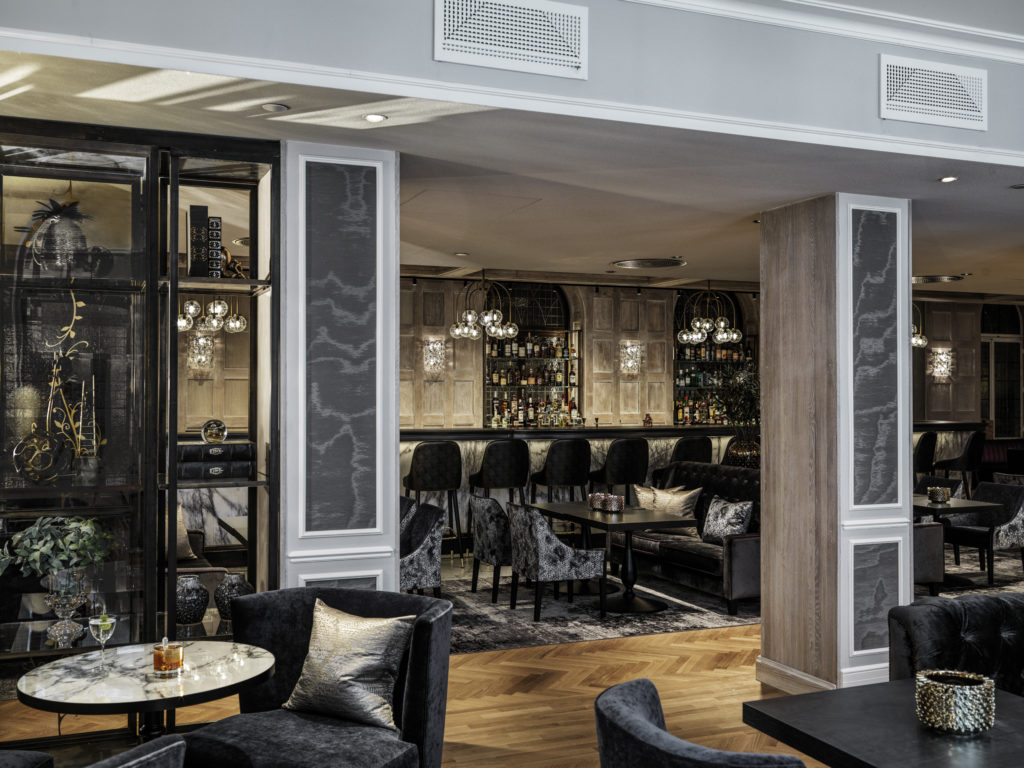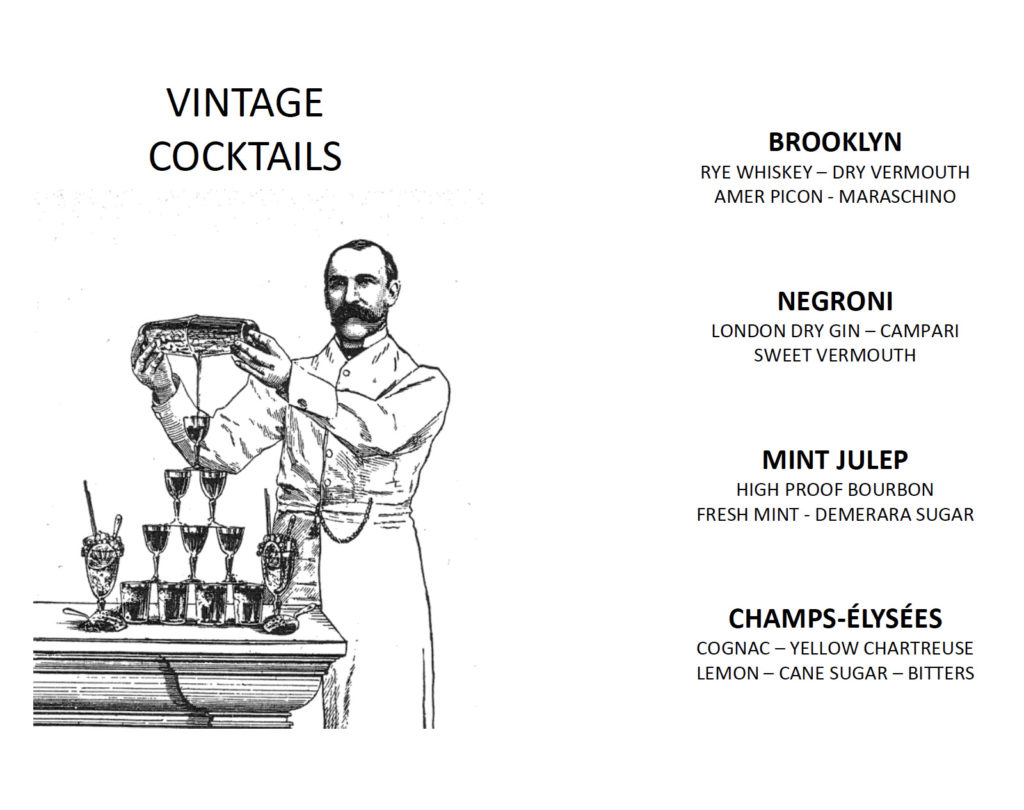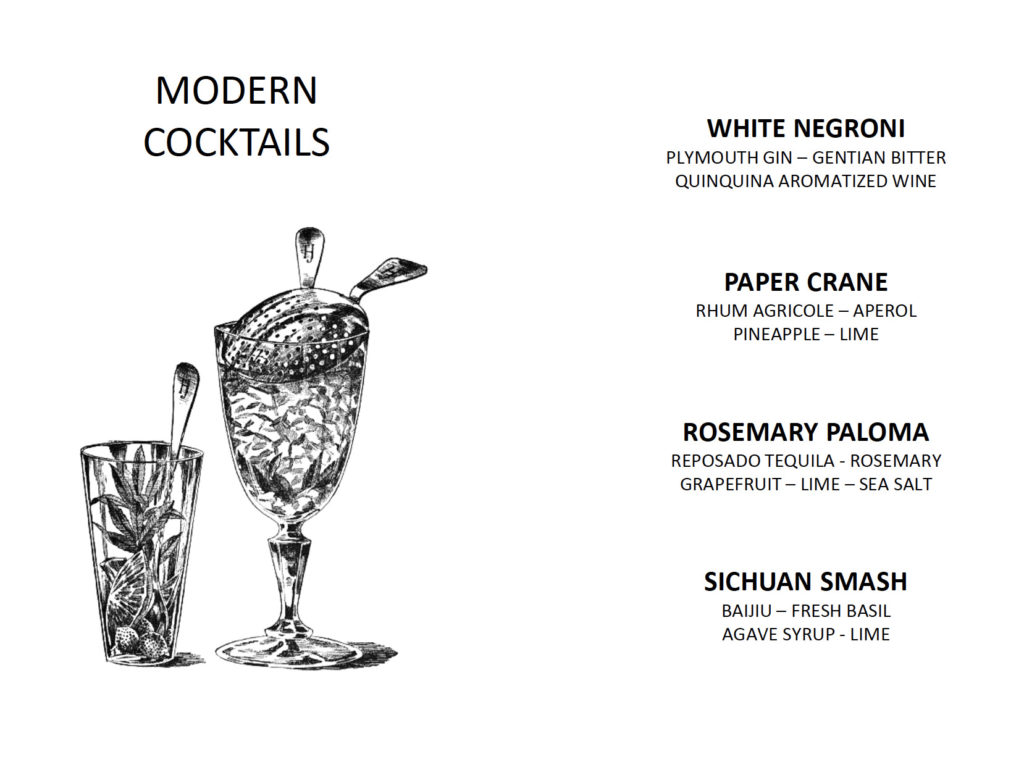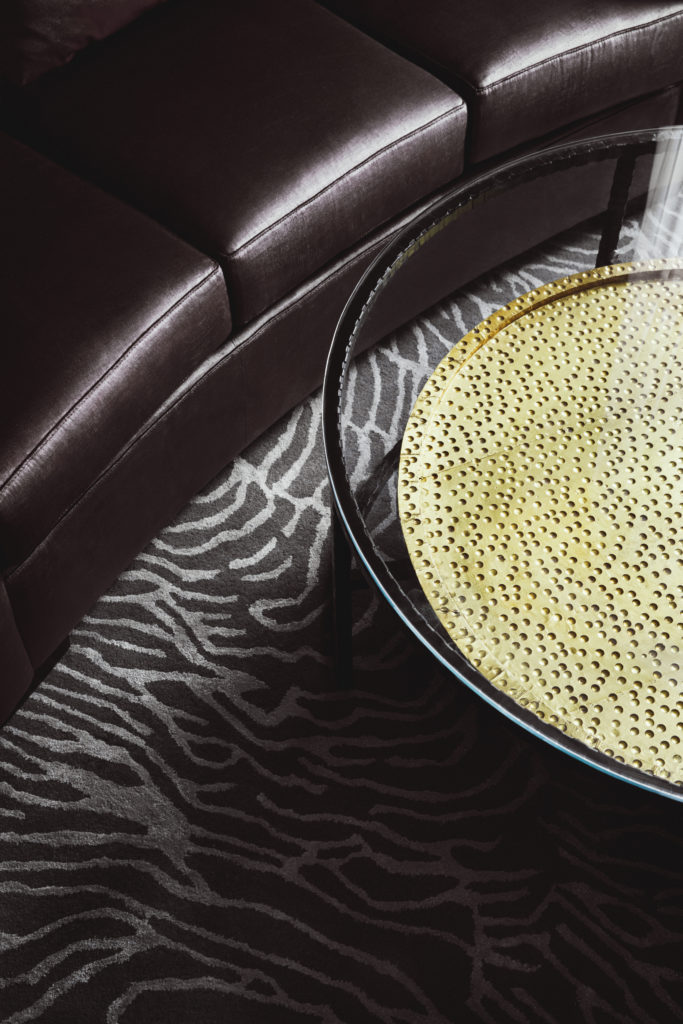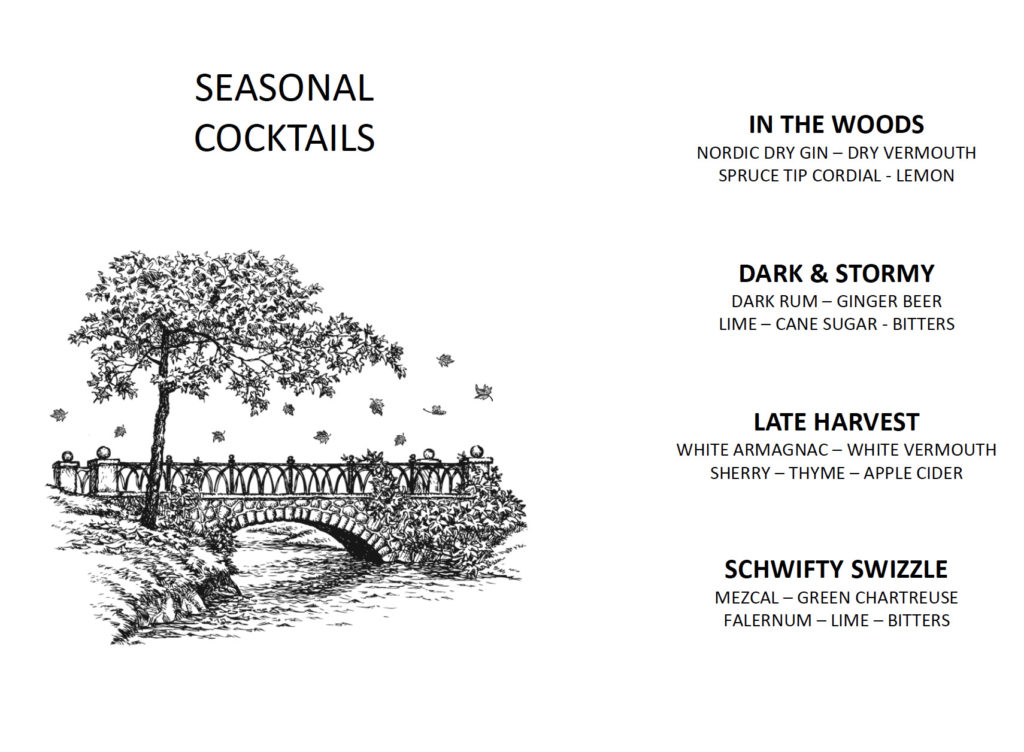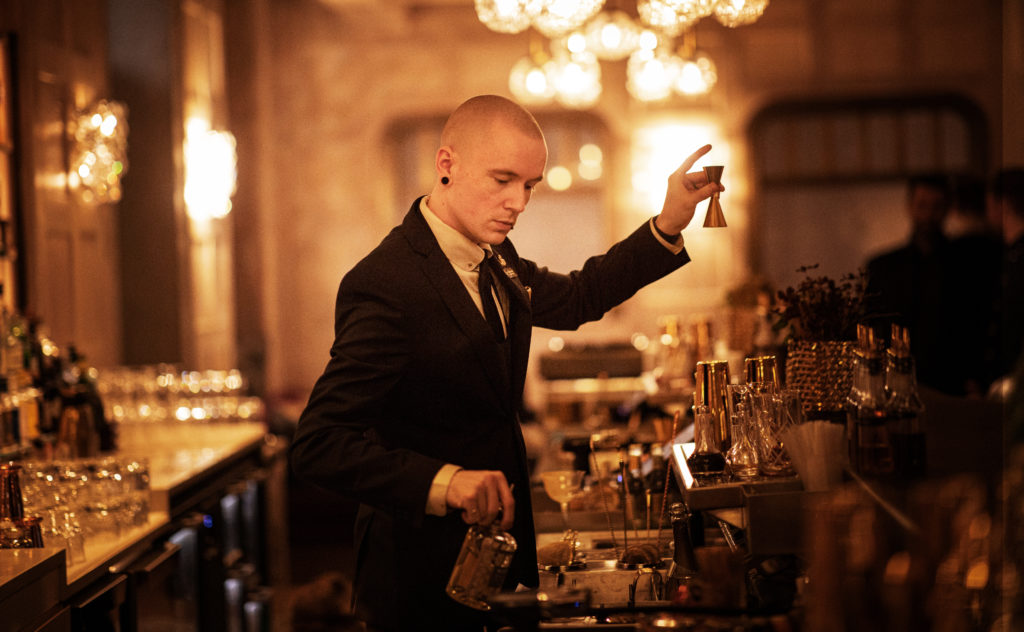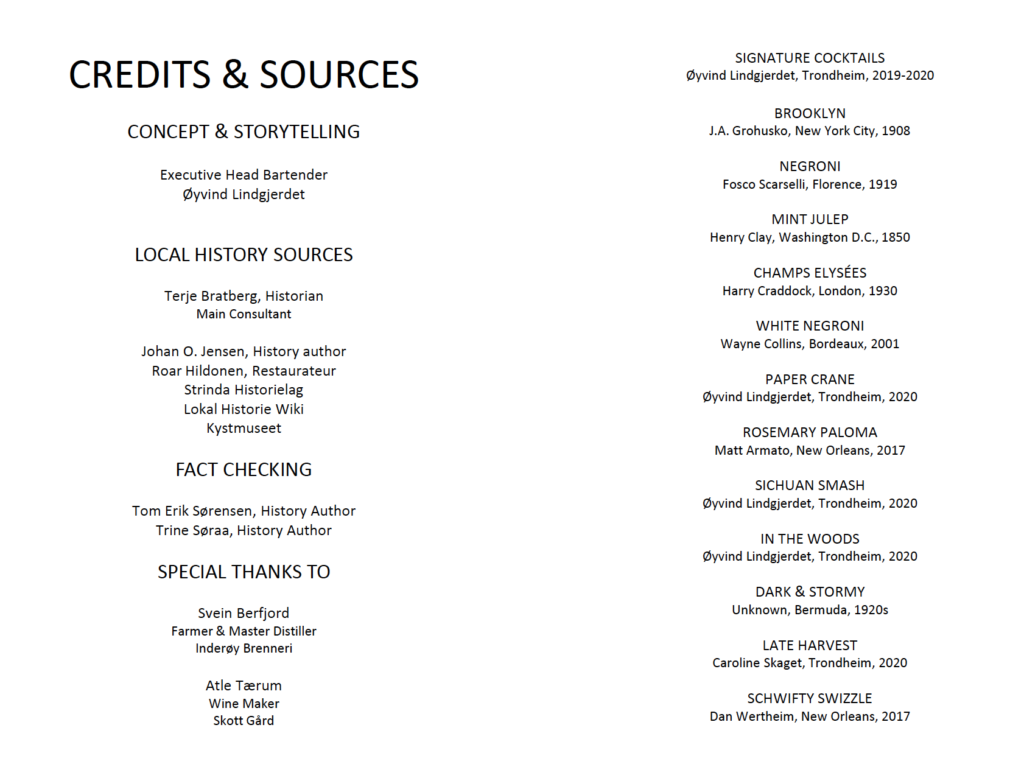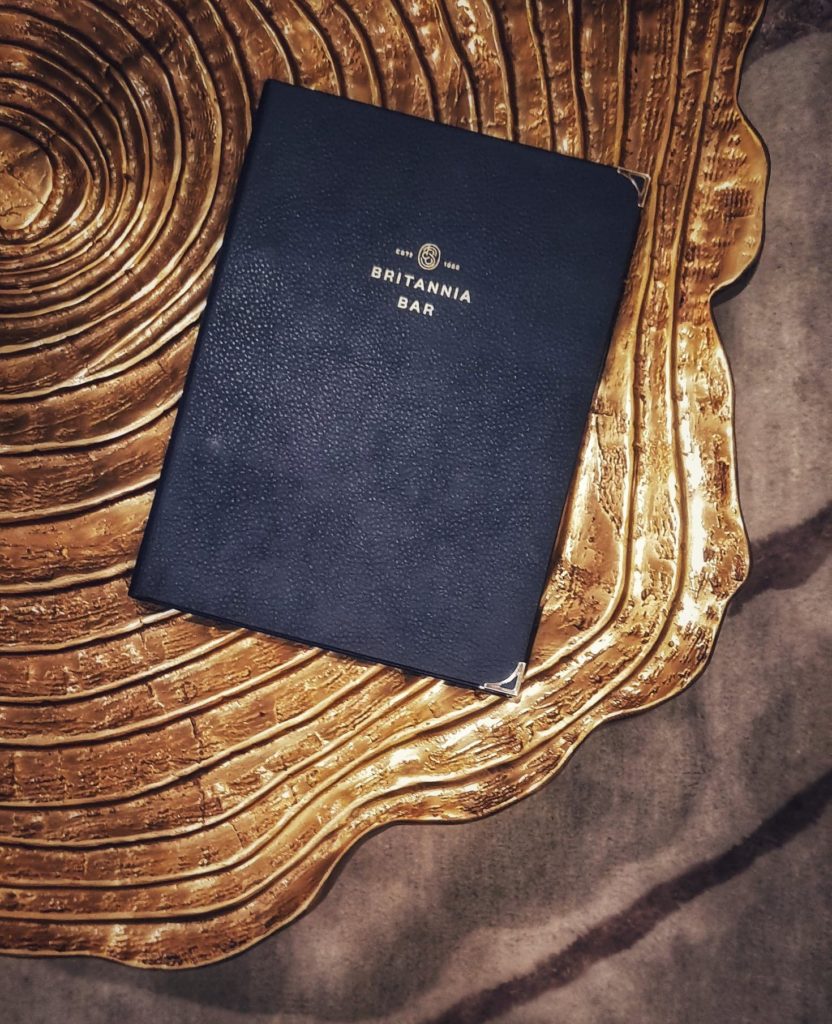
At the heart of Britannia Bar is our unique cocktail menu «A Spirited History» created by our Executive Head Bartender Øyvind Lindgjerdet. The menu has just been officially announced as one of the nominees for Best Cocktail Menu in Norway at the prestigious Bartender's Choice Awards taking place in Stockholm on December 6.
Britannia Bar's signature cocktail menu was built piece by piece around historical events surrounding the city of Trondheim, its residents and the Britannia Hotel itself. Øyvind spent 6 months researching and consulting with local historians before launching the first edition of the menu, composed of 7 signature cocktails.
Once the stories were studied, verified, written and triple fact checked by independent historians, Øyvind didn’t want to use the stories for mere inspiration and then go on to make what he felt like. History itself became his set of rules. He’d only allow himself to use the ingredients, techniques, produce and tools that would have been available in the stories different regions, times and circumstances.
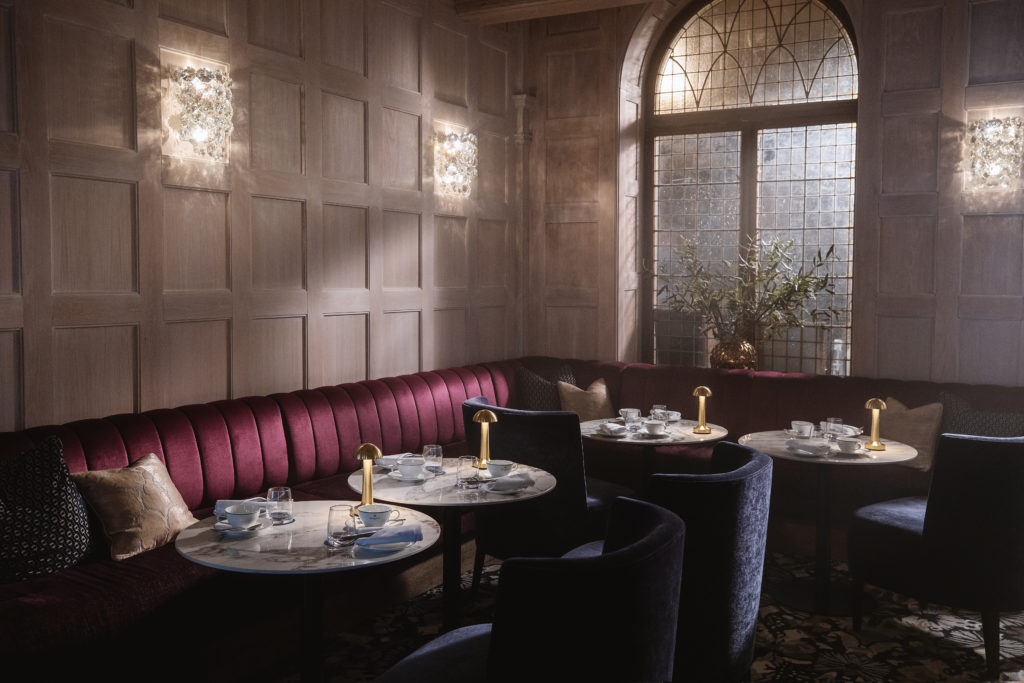
In addition to the signature cocktails, he added three more categories to include the classics: Vintage Cocktails, Modern Cocktails and Seasonal Cocktails. These are changed every three months, following the seasons. The menu is divided into different sections with elegant tabs.
Browsing beyond the cocktail pages you will find the section «Behind The Bar» in which Øyvind gives the reader a deep dive into the products, produce and techniques used for each cocktail. This is also where you find his notes on flavour profiles and the balance of each drink.
The final section is named «Credits & Sources», where everyone who contributed to the development of the menu are given recognition, ranging from historians, authors, museums, bartenders and distillers.
Let's explore the signature cocktails

Journey
In 1805, local business woman Catharina Lysholm sent her ship “Trondhjems Prøve” down the spice route to Batavia, Indonesia. The purpose of the voyage was to trade in various local produce and merchandise, including five barrels of aquavit. When the ship arrived in the Dutch colony, the Captain had a hard time selling the aquavit, as the locals were drinking a superior spirit; arrack, distilled from molasses and red rice. The ship returned to Trondheim in 1807 with all the barrels still in the hold. Upon inspection of the returned aquavit, significant changes were discovered in the character of the spirit. The constant fluctuation in temperature, humidity and the rocking of the barrels at sea had matured the aquavit in unforeseen and astonishing ways. Catharina’s great nephew, Jørgen B. Lysholm, started sending barrels on a journey crossing the equator twice, and thus Linie Aquavit was born.
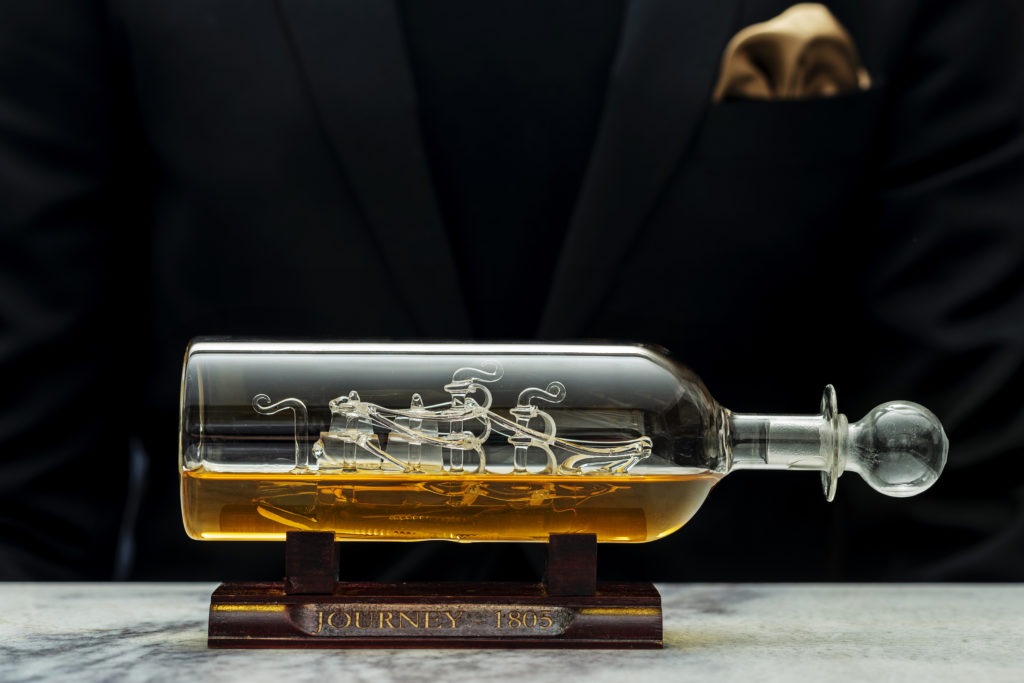
Behind the Journey
An old school concoction inspired by the classic cocktails of the 1800s, this is a spirit driven drink with a complex character of elegant oak and exotic spices. Two unique spirits: Lysholm Linie Aquavit matured on both sherry and madeira casks, accompanied by a modern, unaged Batavia arrack. The cocktail is balanced with a white port, cane sugar and Britannia’s own bitters. The Spice Route Bitters are crafted by our head bartender Øyvind Lindgjerdet. All the ingredients are 100% natural spices macerated in a neutral potato spirit. The tinctures are blended to perfection and aged in American white oak barrels. Bitters ingredients: Wormwood-Gentian Root-Cloves Green Cardamom -Ceylon Cinnamon Star Anise –Mace -Black Pepper
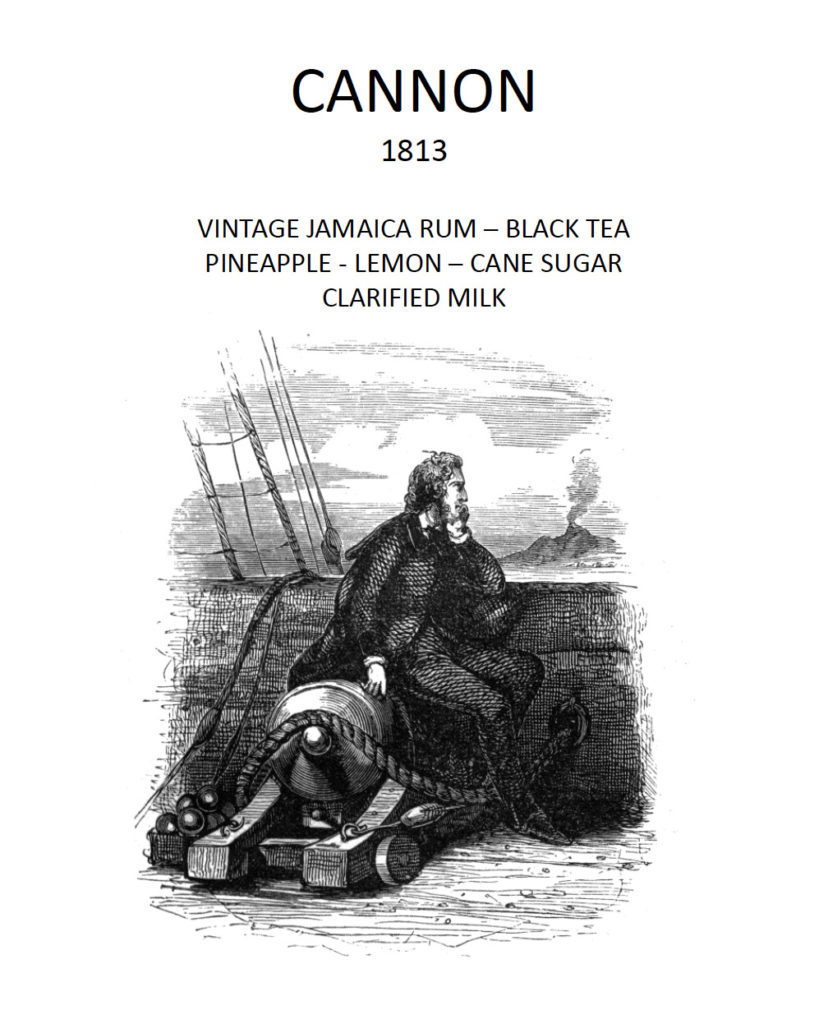
Cannon
During the Napoleonic Gunboat Wars, the King of Norway issued legal papers allowing private citizens to assist in the war effort by becoming “privateers”, effectively government-sponsored pirates. They received special dispensation to install cannons on their vessels and attack the British merchant navy, looting their ships and goods. One of the most notorious privateers in Trondheim was Captain Kaald. Over the years he went on multiple raids and seized inferior ships under the threat of his 14 cannons. In a letter to his financier in Trondheim, Kaald writes about the treasures found onboard the English merchant ship Eliza, which was loaded up with “gunpowder, spiritus and Caribbean rum”. What Kaald did with the spoils of war is undocumented, but any pirate worth his salt would have at least treated himself to a well-deserved milk punch. This is our tribute to the brave Captain.
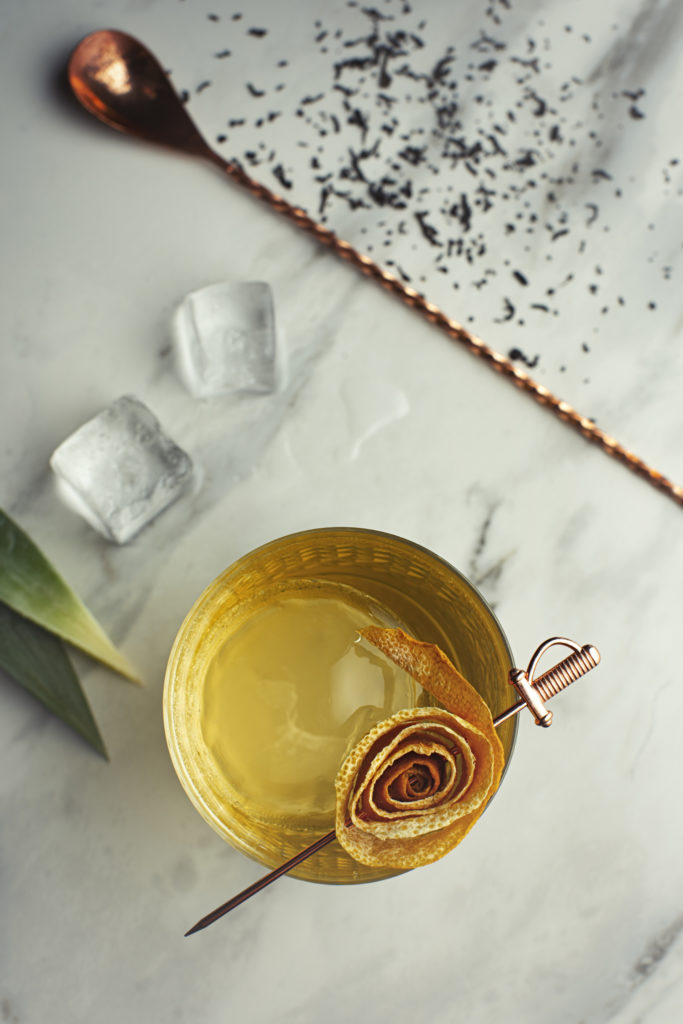
Behind the Cannon
Before the word «cocktail» even existed, there was another kind of mixed drink called punch. Where cocktails tend to be intense and powerful, punches are soft and mellow. Cannon is a «clarified milk punch», a style of punch first recorded in 1711. When the citrusy drink is combined with milk, the acids will coagulate the milk proteins, which are then filtered out. This technique strips out tannins, removes solids and impurities, softening any harsh flavours. When filtered it leaves a completely clear drink, once very popular with sailors who relied on shelf-stable drinks for long journeys at sea. Cannon contains the very funky, ester rich Plantation Xaymaca Rum, traditional black tea, cane sugar and fresh juices of both pineapple and lemon. These ingredients are mixed with low pasteurized whole milk for 24 hours before filtration, resulting in a clarified mellow punch with a lot of funk, sweet pineapple and robust notes of black tea and vanilla.
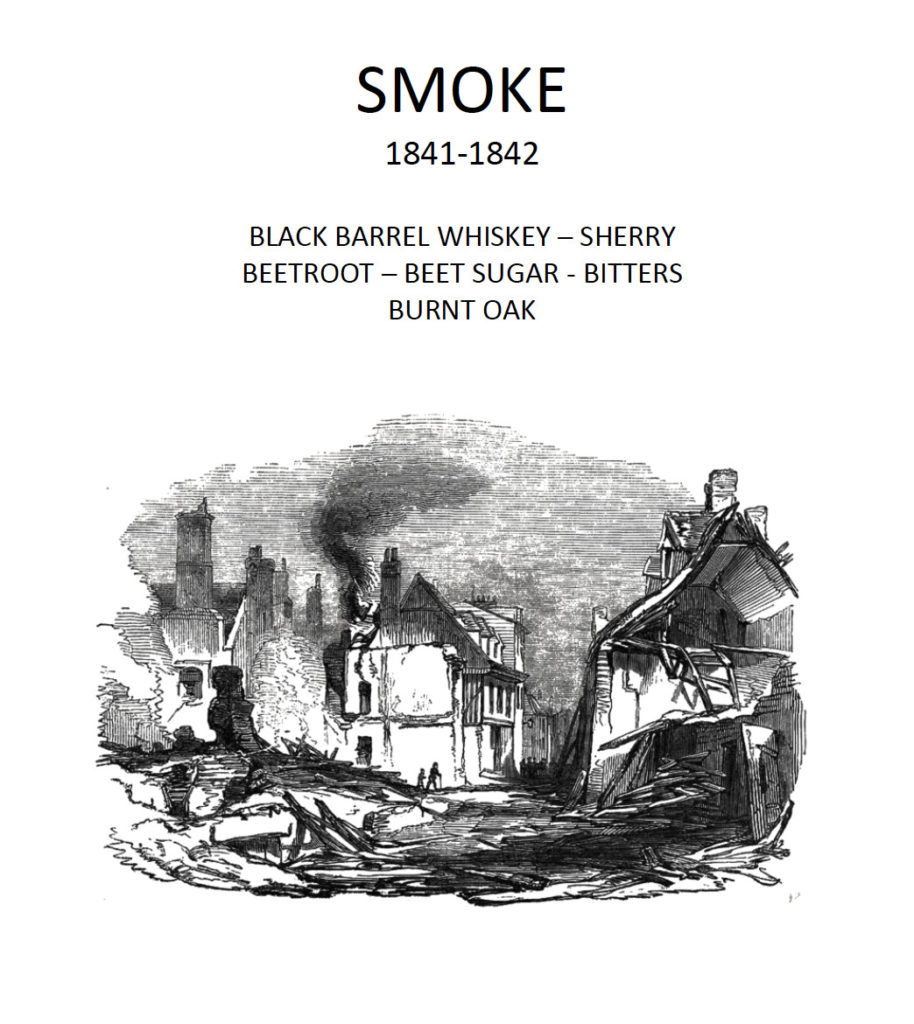
Smoke
Trondheim has the longest continuous line of wooden houses in the Nordics. This fact has invoked many hardships upon the city throughout the centuries. Although it has endured a number of city fires, none have been as devastating as the great fires of 1841 and 1842. The first fire started in a wooden house just one block away from Britannia Hotel, burning down the east side of the city. The following year another fire swept through the west side, leaving the whole city in ashes. The last fire ended its path of destruction at the walls of a brick building, home to a local distillery containing thousands of litres of liquor. Had the fire not been contained at that point, not only would there have been a massive explosion, but the city would have had nothing to drown its sorrows.

Behind the Smoke
This smoky concoction combines traditional craftsmanship, local produce and elements of modern culinary techniques, resulting in a deep, earthy, boozy cocktail with a heavy whiskey backbone. We use Jameson Black Barrel Irish Whiskey where the inside of the barrels have been charred twice. This is an old method to intensify the flavours from the oak, leaving a robust whiskey with notes of toasted wood, butterscotch and vanilla.The whiskey is accompanied by a nutty Oloroso Sherry that has been blended with batches ranging from the year 1910 up until 1964. The cocktail further features aromatic bitters and a syrup we make with red beetroot and beet sugar. After the drink is stirred and chilled, it is poured into a whisky decanter filled with the smoke of burnt American white oak. The decanter is then rolled to incorporate the smoke into the cocktail.

Origins
In 1869, a man named Andreas Myhre bought a modest two-story wooden building in the middle of Trondheim. In that building, in the summer of 1870, Britannia Hotel opened its doors for the first time with 20 rooms, a garden and horse stables.There was no glamour, and no grand opening. He simply took out an ad in a local newspaper and unlocked the door. As the business grew, Myhre wanted to rebuild and expand the hotel considerably. In 1877 he drew up plans for his new hotel, but sadly he would never see them realized, as he died the following year. Years later, the hotel was rebuilt in his vision by his widow and her new husband. Andreas Myhre is remembered as the original founder of Britannia, but he never got to know how great his legacy would be. Now, 150 years later, Britannia Bar has created a Champagne cocktail to celebrate the Grand Opening he never had.
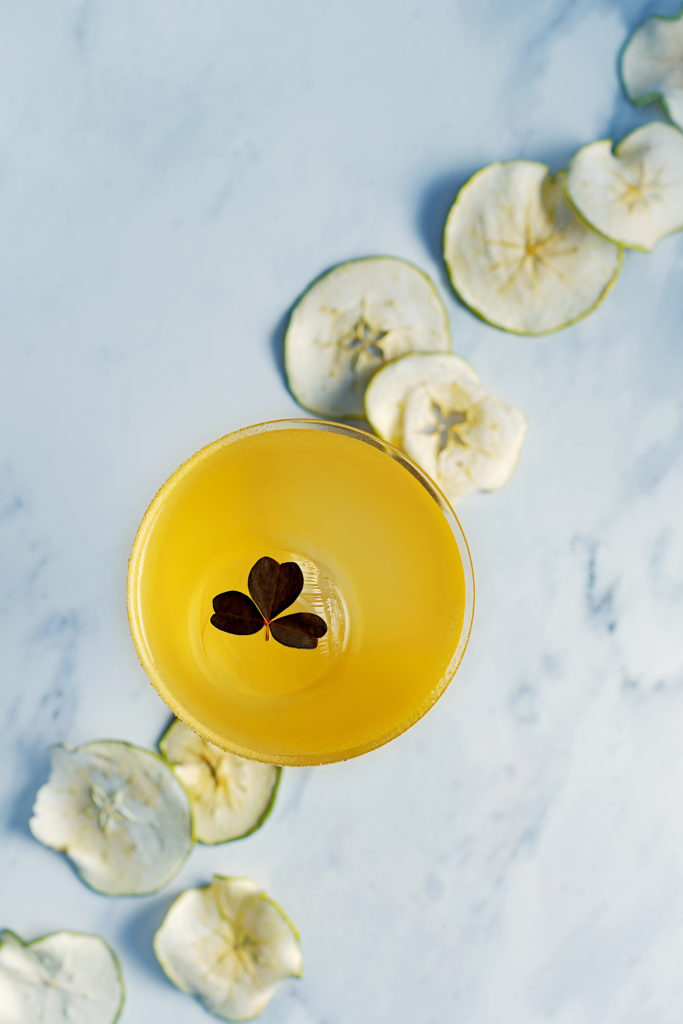
Behind the Origins
Whenever we sift through old menus from special events and grand dinners served at Britannia in the late 1800s, they all have one thing in common: Ayala Champagne. Origins is based on our very own Britannia Champagne blended by Ayala, one of the great Champagne houses founded in 1860. The Britannia Champagne is fruity and fresh with notes of citrus and white flowers. The complementing spirit is Koval Barreled Gin from Chicago, with elegant notes of oak, thyme and caramel. We also use a teaspoon of Chartreuse Cuvée des M.O.F. -a special edition yellow Chartreuse made by the greatest sommeliers of France, adding a beautiful complex layer of génépi, mint and pepper. We further mix the drink with a cordial based on Norwegian red Discovery apples, beet sugar and malic acid. The result is a delicately balanced dry and refreshing cocktail.
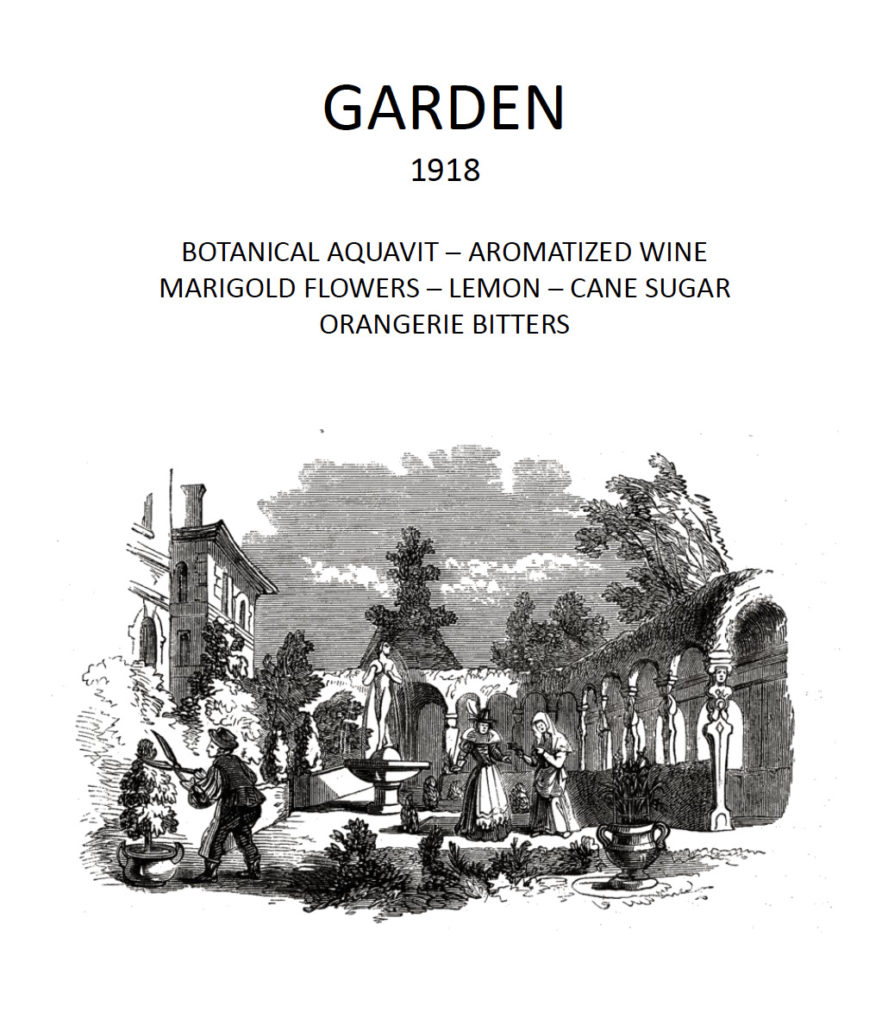
Garden
In 1918, Britannia opened its iconic new restaurant, Palmehaven (The Palm Court). The restaurant was breathtaking, but the timing proved horrible, as Norwegian prohibition came in tofull effect the following year. With no money to make from alcohol sales, the hotel declared bankruptcy within a few years. European wine countries such as France, Spain and Italy lost a lot of money on this, and over the years put increasing pressure on our government. When they threatened to stop importing Norwegian fish, our government gave in. The import of European wine resumed, marking the beginning of the end of the dry years. When prohibition was finally abolished in 1927, Britannia had new owners, the Stensrud family. The Stensrud's also owned a mansion with huge greenhouses where they grew produce for the hotel. Among these were “orangeries”, indoor greenhouses for growing foreign flowers and fresh citrus, bringing forth a new era of exotic flavours.
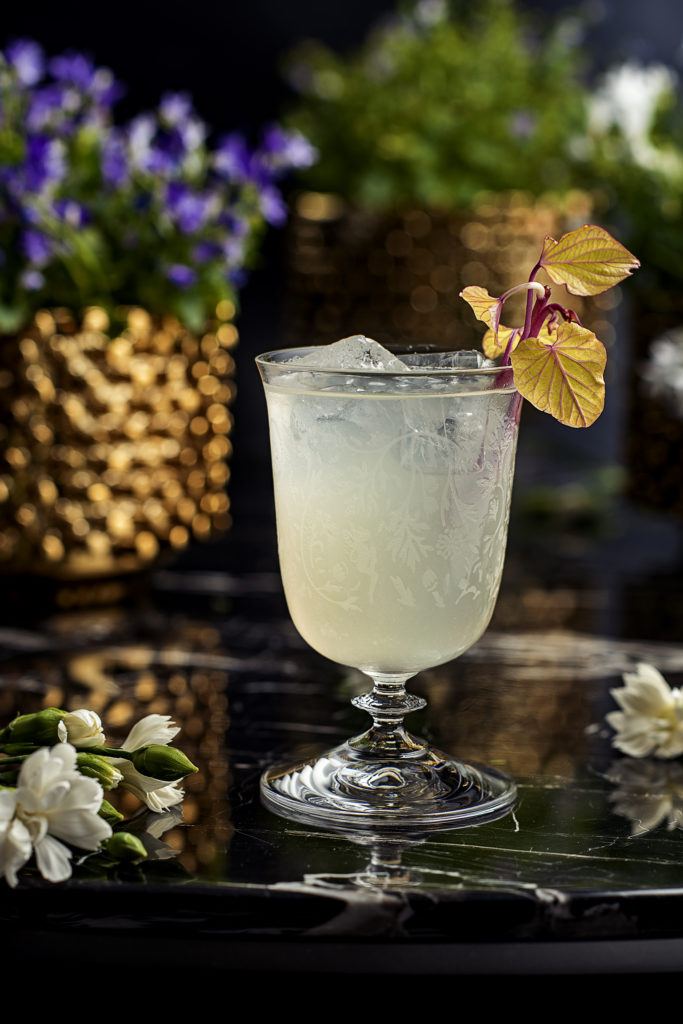
Behind the Garden
This herbaceous cocktail is our homage to the Palm Court garden. Floral, citrus forward and intense in flavour, the drink is based on the unaged Lysholm No 52 Aquavit. The fortified wine is Cocchi Americano, an Italian aperitivo created in 1891, aromatized with quinine bark, bitter oranges, rose petals and gentian flowers. The drink is mixed with fresh lemon juice, our very own bitters, and a syrup made with fresh marigold; a petite flower bursting with tarragon and anise like flavours. The Orangerie Bitters are crafted by our head bartender Øyvind Lindgjerdet. All the ingredients are 100% natural botanicals macerated in a neutral potato spirit. Bitters ingredients:Angelica Root -Naval Orange PeelsKaffir Lime Leaves-Coriander Seeds
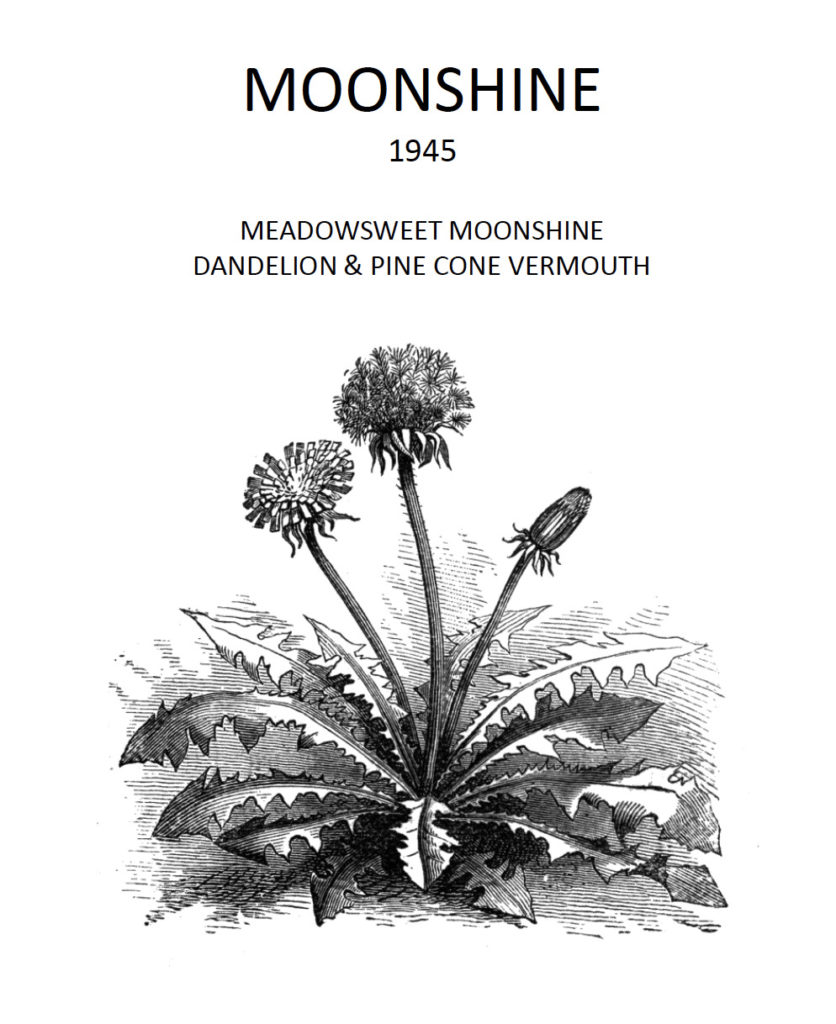
Moonshine
When German forces invaded in 1940, Britannia Hotel was among the many buildings seized. With soldiers on every street corner, the Norwegian way of life changed dramatically overnight. Trade routes were essentially shut down, rationing introduced, and production of alcohol banned. Wartime meant people became creative with their food and drink; foraging and experimenting with local ingredients. When imported spirits became scarce, people turned to black market moonshine. Upon the German surrender in spring 1945, The Norwegian Resistance Movement took back Trondheim, alongside English and American soldiers. They distributed flyers in the streets reading; “Our struggle is crowned in victory. Norway is free at last. ”The following days were filled with celebration in the streets, crowds waving flags, singing, dancing and drinking.
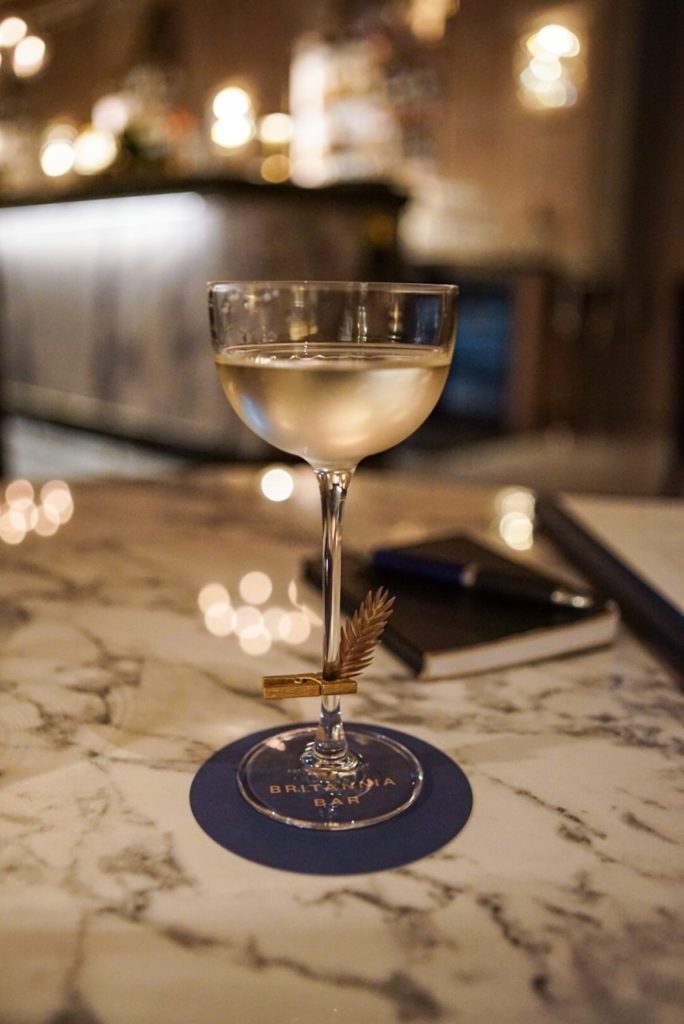
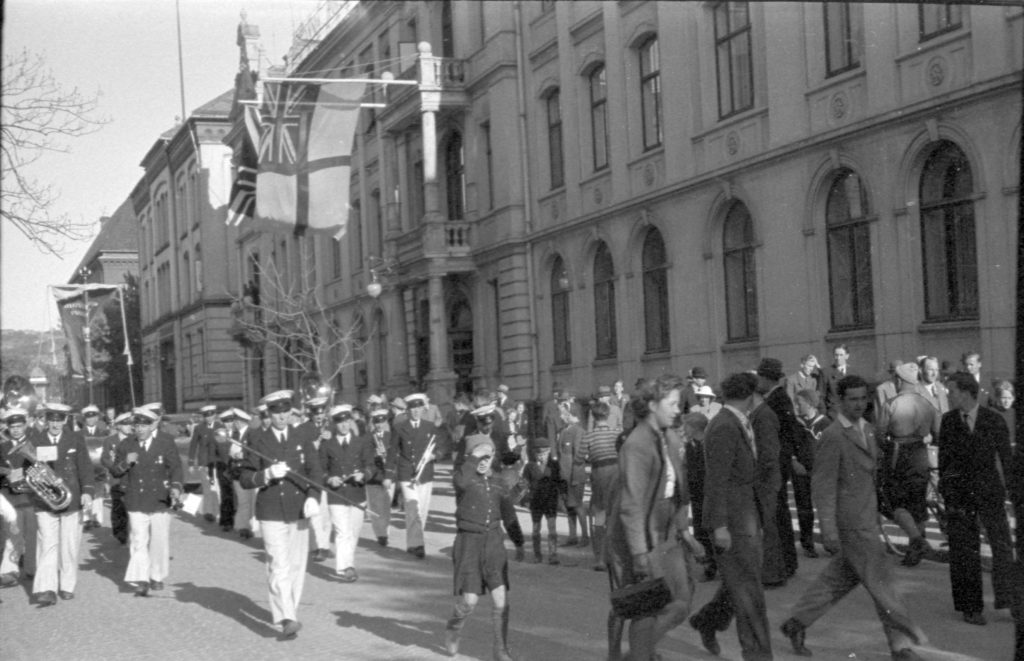
Behind the Moonshine
A true native of Trøndelag; this cocktail is made exclusively from regional products, foraged ingredients and local craftsmanship. To create the Moonshine, Head Bartender Øyvind Lindgjerdet crafted his own category-less spirit with the help of a local farmer and distiller. Øyvind calls it his “Botanical Moonshine”, a homage to the black market bootleggers who flourished in Norway during World War II. The spirit is made by distilling potatoes to 96%, diluting with local water and infusing with four different botanicals hand-picked in the region: Meadowsweet, Yarrow, Rowanberries and Angelica seeds. At a nearby farm, the spirit is re-distilled in a copper pot.
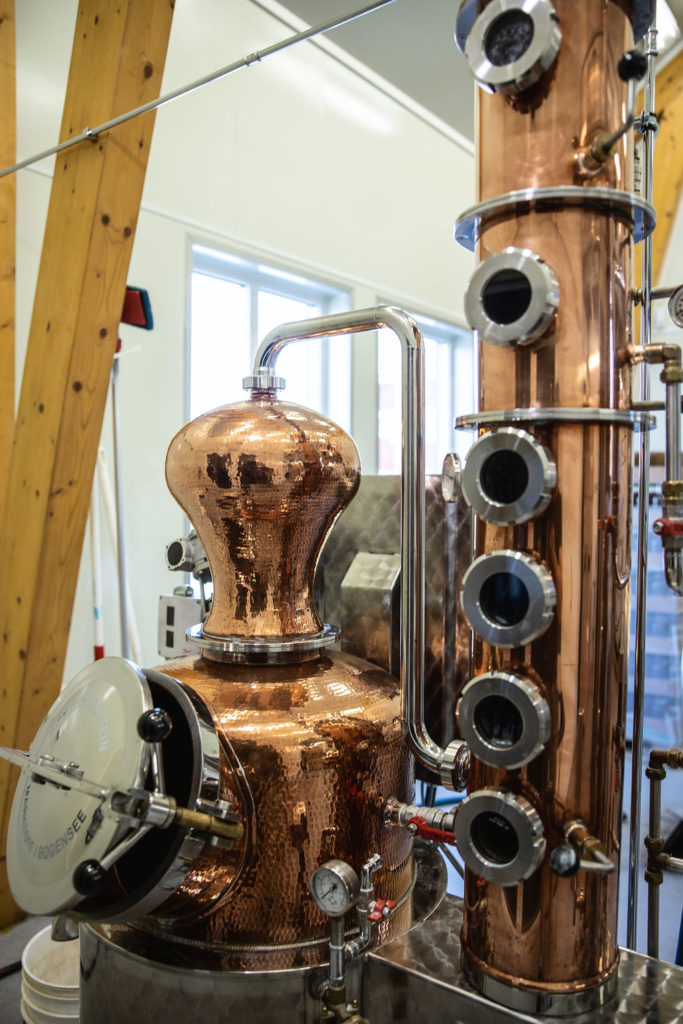
The finished moonshine is mixed with Øyvind’s own “vermouth”, a wine made from Norwegian gooseberries and elderflowers, aromatized with dandelion leaves, fragrant green pinecones, spruce tips and angelica root, and fortified with a neutral potato spirit. The result is a mellow but boozy, creamy but dry, Martini-style cocktail, with a complex aroma and flavour of Norwegian nature.
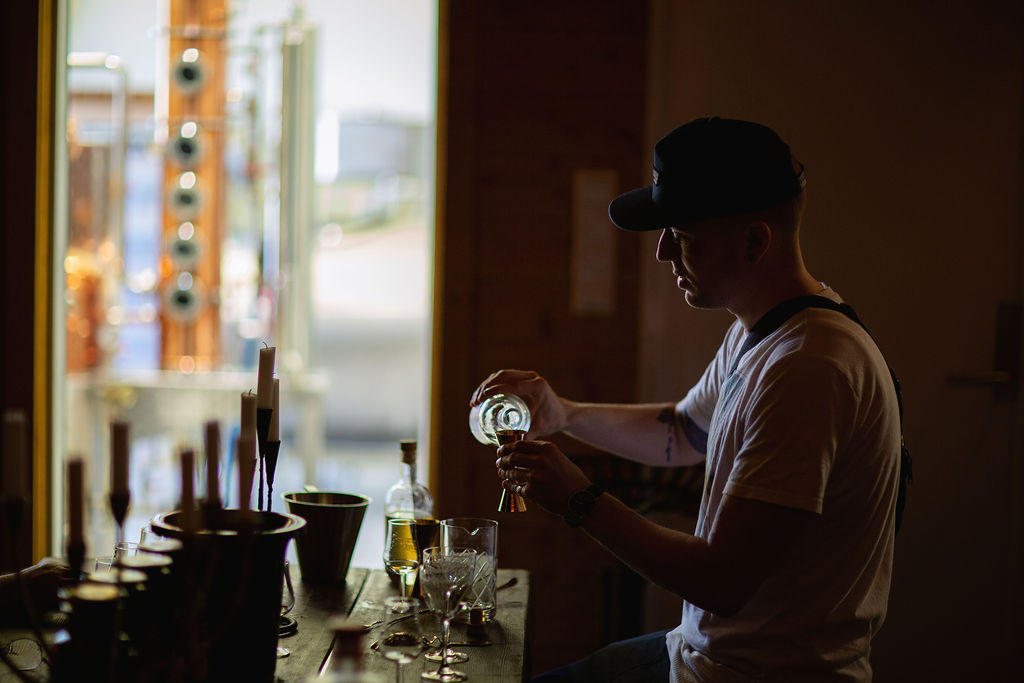
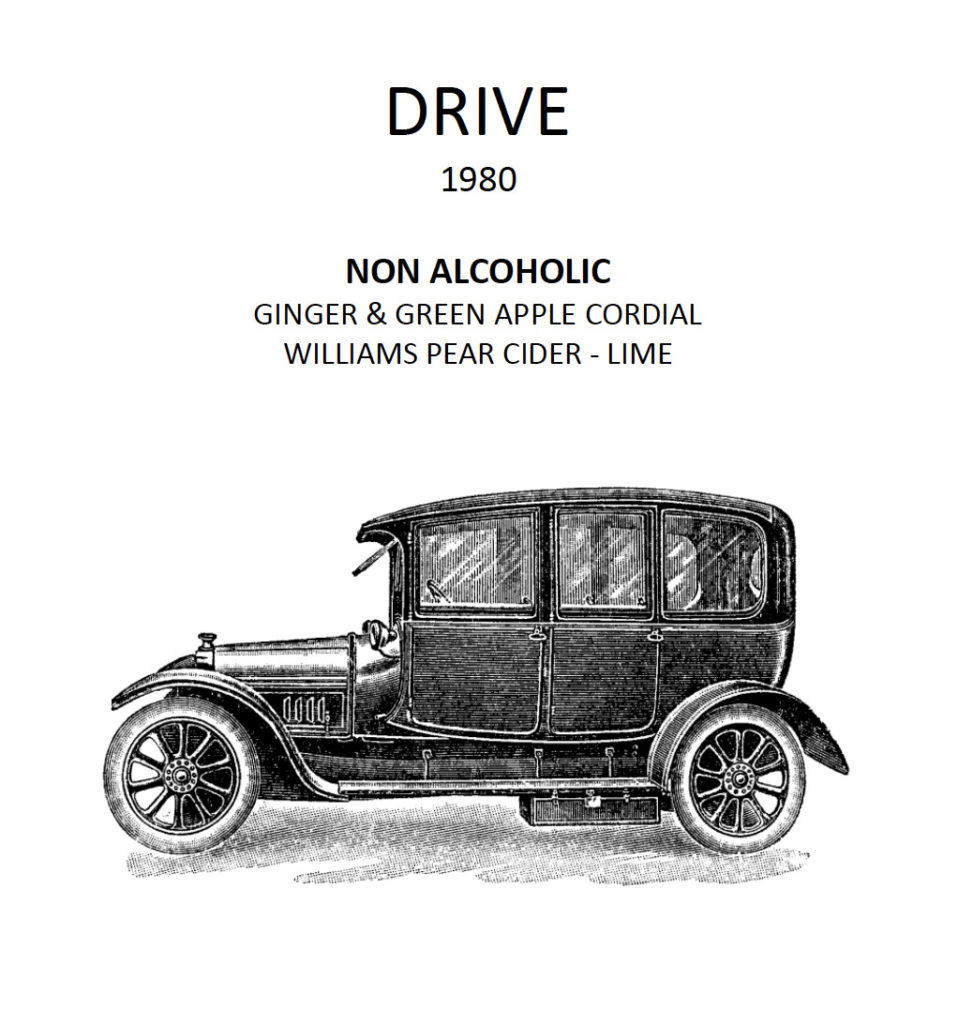
Drive
If you are Norwegian and over the age of 50, you have almost certainly heard of the drink “Olsen Driver”. Leif N. Olsen was a high-profile police commander in charge of highway patrol and road safety from 1976 to 1985. He later worked as a traffic host on the radio, and as a driving instructor. In 1980, Olsen launched a campaign to reduce the number of car accidents due to drunk driving, and with the help of bartending World Champion Sven Aage Jonsbråten, a non-alcoholic cocktail named “Olsen Driver” was born. The drink was supposed to mimic the appearance of the popular drinks of the time, and it quickly gained notoriety in bars nationwide. The original recipe was a mixture of lime cordial, apple juice, ginger ale and soda water. Britannia Bar introduces a modernized version for a new generation of designated drivers, in honour of the two legendary men, Leif N. Olsen and the late Sven AageJonsbråten.


Behind the Drive
With great respect for the original cocktail, we kept the same flavour elements from Jonsbråtens original recipe but switched out the brands and gave it a new balance with fresh produce and a spicy kick. Tart apple juice and ginger are dominating the drink, while the cider calms the intensity of the flavours and sends the drink into a dry and refreshing direction. We use a non-alcoholic sparkling apple & Williams pear cider, made with apple juice, pear juice and dealcoholized wine. The cocktail is further balanced with beet sugar and lime juice. Before launching the Drive, we brought in Jonsbråtens bar protégé Roar Hildonen for a tasting. He told us his old mentor would definitely approve of our remake. Enjoy this drink in good conscience for the drive home!
